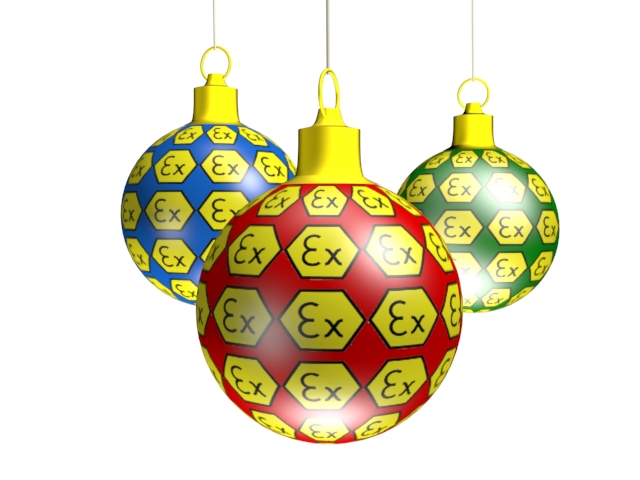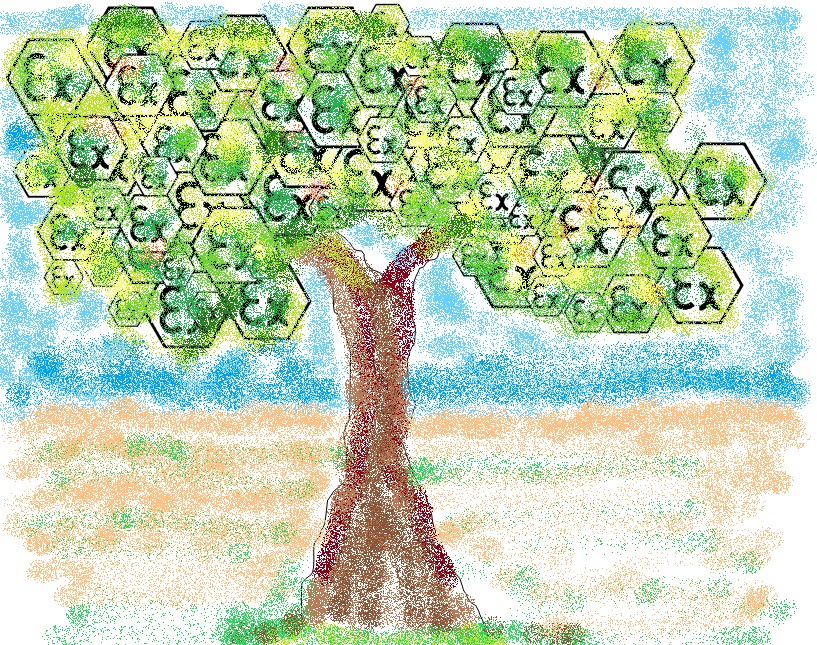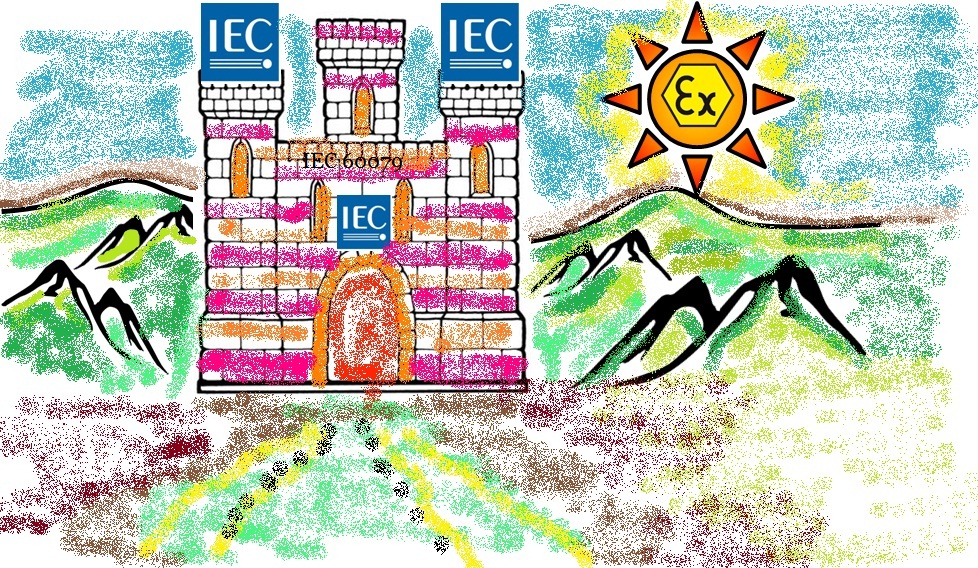Ex-pert Electrical Technologies
Dynamic elaboration on the Art & Science of Hazardous Area Protection
95.2 expertdesk III
Information Paper 3
Use of Hazardous Area Certified Ex d Enclosures in view of IEC 60079-0 & IEC 60079-1
Let us first define a Hazardous Area

An area in which an:-
Explosive atmosphere is present, or may be expected to be present, in quantities such as to require special precautions for the construction, installation and use of electrical apparatus. Explosive atmosphere is formed by the mixture, with air, of flammable substances, in the form of gas, vapor, dust, fibers, or flying’s which, after ignition, permits self-sustaining propagation.

Examples: An industrial facility, processing flammable material, such as Oil /Gas Processing Plant, Fertilizer Plant, Chemical Plats & coal mines etc.
History of Ex d enclosures

History of Ex d type enclosures begins with the safety-framework of Coal Mines .
• Ex d-type enclosure is one of the oldest and most faithful component in Use in the Hazardous Areas.
Its creation was initiated in the early days of utilization of electrical energy for illumination, by the ever increasing number of fatal accidents in the coal mines due to Fire Damp. (A highly explosive mixture of mostly Methane & cola dust )
• Already Humphrey Davy’s Safety Lamp was in use with very low accidents rates and better accident-free results were being expected with the introduction of electricity for illumination and communication in the coal mines but the results were not as per expectations.
• It was found that the Trouble makers were the, commonly used, electrical switches (On- Off). That little spark or arc which is part of the switching-off operation (by nature) is the root –cause of explosions. Of course an effective solution was immediately required.
• The most logical solution was to separate the switch from the explosive environment by placing it in a strong metallic box and seal the box, of course, after connecting the switch.
• The underlying logic is : SEGREGATION or SEPARATION

If there was, an explosive atmosphere already present in the enclosure (the box), any inside explosion will remain contained in and the effects will not be transmitted outside the box to the explosive atmosphere. Similarly the flames or the hot gases resulting from any out-side-the-box explosion will not have any effects on the energized insides.
• Hence the terms : Explosion Proof & Flameproof
FLAMELPROOF ENCLOSURE by IEC (60079-1) and EXPLOSION PROOF by NEC (500 & 505).
That was 100 year ago.
Apparently, it’s an ultimate solution for the safe use of electricity in Hazardous Areas, as a
multi- purpose enclosure which can be formed into many electrical equipment, such as control Stations, Terminal Boxes and Power Panels etc.
The underlying safety strategy is simple: Ex d is CONCENTRATED SAFETY provided, solely, by the enclosure.
Another good-for the-mankind event taking place at the same time was the Process of
Standardization.
-National Fire Protection Association in USA initiated the formation of National Electrical Code (NEC 500) and later on International Electrotecnical Commission –IEC was formed independently.
Ex d and the present-day scenario
These are tens of manufacturers in the world, manufacturing Ex d enclosures, all catalogued as Empty Enclosures. The basic guide lines are tabulated in IEC 60079 and ATEX directives. Each and every Hazardous area component & equipment is certified by a Certifying Body for the Compliance.
The relevant standards of IEC and NEC has tremendously increased the safety level of equipment & components for use in Hazardous Areas through an elaborate system of Technical Committees & certifications through IECEx & its certifying bodies, with whole of the world, on board.

The new concepts includes EPL (equipment protection level) and SIL (Safety Integrity Level).
SIL (Safety Integrity Level)

An abbreviation for “Safety Integrity Level” and has now become a synonym for Functional Safety. SIL defines a measure of the safety-related performance or reliability of an electronic or electrical control device.
SIL focuses on assessment of the safety chain, also referred to as SIF “Safety Instrumented Function”. Typically, this safety chain consists of:-
- A fail-safe control
- An actuator
- A sensor.
The SIS “Safety Instrumented System” consists of one or more safety chains.
(ELECTROMACH)
(A little bit about SIL Values)
SIL 4 the most dependable and SIL 1 the least.
ZERO means no Functional Safety

Ex d & International Electrotechnical Commission
IEC60079 series of Standards (IEC 60079-0 & IEC 60079-1) fully encompass all the aspects of Ex d enclosures and the respective standards show us that an Ex d enclosure in reality, is a COMPONENT with a special indication mark in its ex-certificate.
Examples from industry:
Three different types of Ex d enclosures from a single manufacturer.

Type A Type B Type C
Type A:IECEx PTB 07.0027 U (for size 0)
Type B: IECEx BVS 13.0067 U
Type C: Type C: IECEx KEM 07.0050 U & KEMA 01 ATEX 2145 U
All these certificate have a common parameter. The letter U as a suffix.
The Letter U simply indicates that the certificate belongs to an Ex Component
An Ex Component requires special treatment and so let us define it first
Definition of an Ex Component from IEC 60079-0
Part of electrical equipment or a module, marked with the symbol “U”, which is not intended to be used alone and requires additional consideration when incorporated into electrical equipment or systems for use in explosive atmospheres
As Ex Components are not intended to be used alone and require additional consideration when incorporated into electrical equipment or systems, they do not have “Specific Conditions of Use” along with the associated “X” suffix for the certificate number.
Where this standard or one of its sub-parts specify “Specific Conditions of Use” and the associated “X” suffix for the certificate number, a “Schedule of Limitations” for the Ex Component certificate and the associated “U” suffix for the Ex Component certificate number shall be substituted for an Ex Component.
The letter U (Suffix)
An Ex Component certificate (Identified by the symbol “U” suffix to the certificate number) is prepared for parts of equipment that are incomplete and require further evaluation prior to incorporation in Ex equipment. The Ex Component certificate may include a Schedule of Limitations detailing specific additional evaluation required as part of incorporation into Ex equipment. An Ex Component certificate shall clarify that it is not an Ex equipment certificate.
Equipment Certificate
A certificate prepared for equipment other than an Ex Component. Such equipment
May include Ex Components, but additional evaluation is always required as part of their
incorporation into equipment. IEC 60079-0
What is the meaning of all of this![]()
It simply means that an empty enclosure is certified as an empty enclosure and if any other
electrical components are installed inside or outside ,physically connected, then , being populated
now , the empty enclosure certificate is no longer applicable and the assembly has to be certified as an Assembly or technically speaking, as an Equipment.
This has been formulated to STOP, totally stop and discourage the practice of self-fabrication of Hazardous Area equipment, using branded Ex d empty enclosures.
Obviously there is a very strong temptation in it, for our local enthusiastic entrepreneur
contractor, supplier, to purchase branded enclosures and fabricate their own Control Stations, Junction Boxes etc., using commercially available industrial components
Because the process of self-fabrication is not difficult and Ex d , branded enclosures , along with the relevant down-loaded certificates (With suffix U Removed) are available from nearly all Ex manufacturers . The resulting finished product is comparatively very cheap.
And in our cost-conscious bidding & evaluation system, this may be a WINNER but actually the customer or the buyer is a looser.
It’s a very bad deal for the end-user, the end-user is usually the operator, remotely stationed in some remote plant and with no other choice but to rely fully on the safety level of the third-party planned, first-party purchased and X-party installed electrical equipment in front of him or her.
This may be stage set for a tragic human drama.
Don’t forget that the certificate which is available on the net is for an empty enclosure and NOT for your fabricated assembly. You cannot guarantee the safety of the use in Class1, Zone 0, 1, or Zone 2 classified areas. You don’t know how your assembly will behave in case of a fault or in case of failure of any of the installed components
Remember that an Ex d enclosure is safe by virtue of its material, construction and TESTING.
The Safety is CONCENTRATED in the enclosure only, all the rest of the installed components are adding to the FIRE Hazard
With the addition of each component the Safety Parameter of Ex d enclosure is put under more stress and the BREAKING POINT can only be assessed through TESTING of the same ASSEMBLY.
This, we all know is not possible to carry out in any kitchen or any industrial workshop.
• But my previously home-made, fabricated & sold JBs and Control Stations are still in operation without any explosion?(Remarks of an Self-certified Ex Fabricator )
( Good luck to the end-user)
Inside a hazardous area, during operation, all the safety parameters of the involved electrical equipment are under stress. In a well-planned & designed facility the respective EPL of the equipment are not allowed to be stepped over by the safety-stress
This can be easily achieved from processing of respective equipment & material data.
The only missing data is that of my self-fabricated JUNCTION BOX because it has not been tested.
This may or most probably will, be the weakest link.
Besides:
• There may have been lots of near-missed situations…which cannot be recorded.
• There is no history of MY JUNCTION BOX…nobody knows how it is going to be after one year of out-door operation. ALL NEW BROOMS SWEEP CLEAN.
• Manufacturer’s history and the respective equipment history play a very important part while choosing Ex equipment.
New manufacturers are cheap but they do not have any history of any of their
Ex products. As they do not have the long-term, under stress operation data of their products.
CATCH-22 situation for the new manufacturers
(Example of a CATCH 22 Loop)

So… Who is the user of Empty Ex d enclosure?
Our relevant guide is IEC 60079-1- Annex. D
The purpose of an Ex Component enclosure certificate for empty enclosure is to enable a
manufacturer of flameproof enclosures to obtain a certificate without the internal equipment being defined, so as to enable the empty enclosure to be made available to THIRD PARTIES for incorporation into a full equipment certificate without the need for repetition of all the type tests for flameproof enclosures “d” as required by IEC 60079-1 and IEC 60079-0. When a certificate concerning the full equipment is required, an Ex component enclosure certificate for the empty enclosure is not necessary.
That simply means that empty Ex d enclosures are not for the local THIRD PARTIES. Because the final required certificate is an equipment certificate.
You can make your own, say, STAR-DELTA motor starters for use in Class1, Zone 1 but before putting that STARTER in operation , full compliance Equipment Certificate is required from a Certified Certifying Body.
So….it’s better for me to buy a Branded Ex Certified Motor Starter than to spend huge amount of money for certification and registration.Official Equipment certificate is the only guarantee for the safety of the operation in Hazardous Area.
Next time when you get a quotation of Ex d, say, Junction Boxes with fuses or HMI installed locally then ask for a certificate, equipment certificate. Not just a component certificate with the letter U removed, downloaded from the net.
The whole process should be a WIN-WIN-SAFE-SAFE solution
END.
(This paper was read at IEEEP 2016 Session at Karachi )
…….cont.












